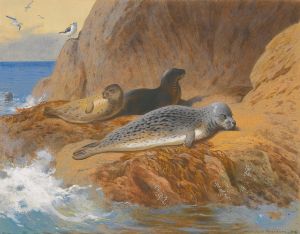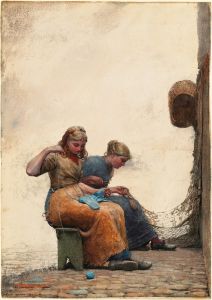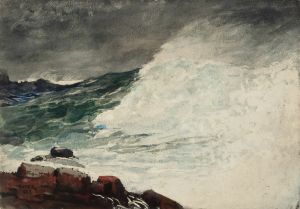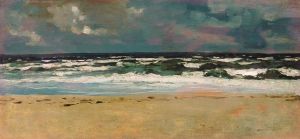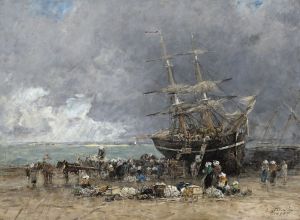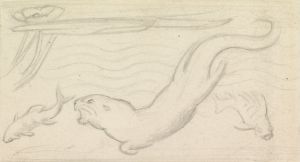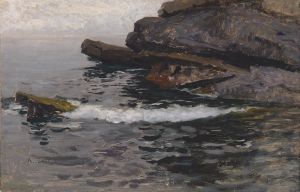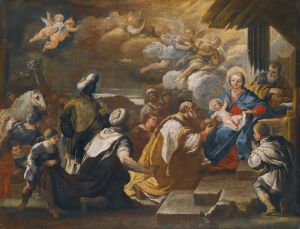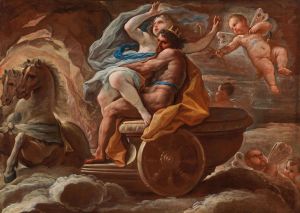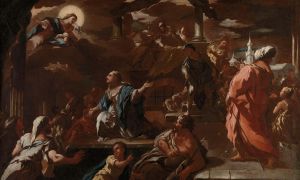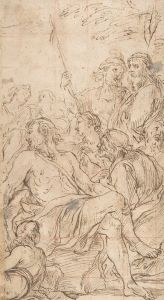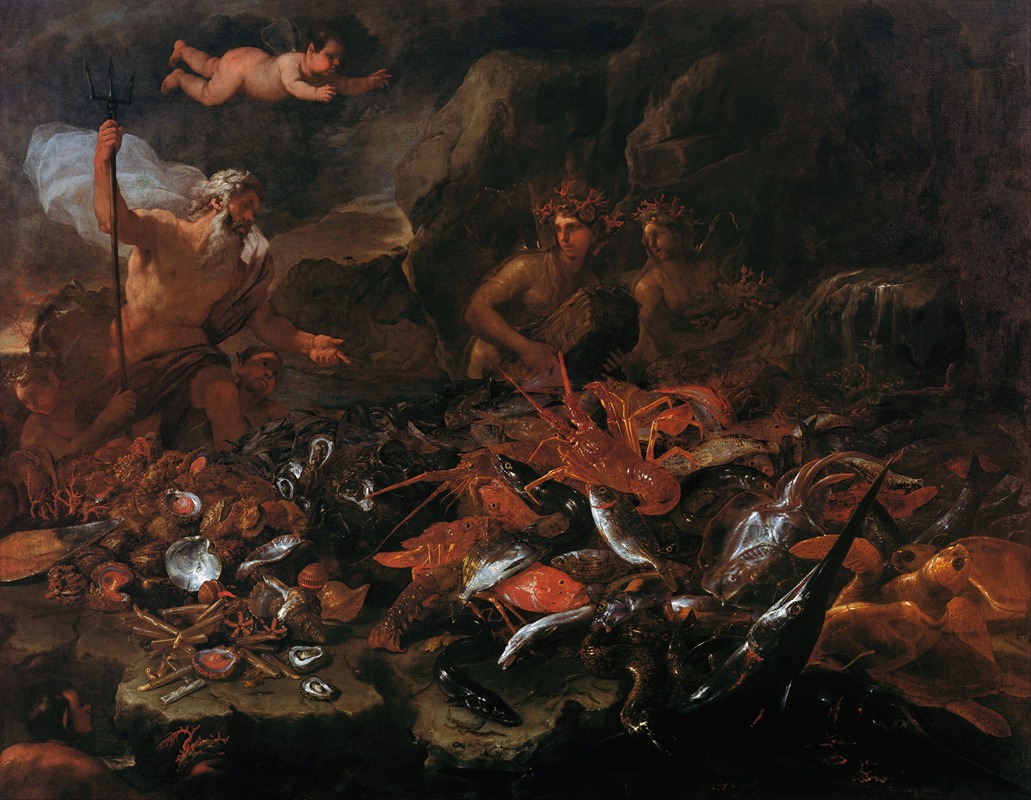
The riches of the sea with Neptune, tritons and two nereids
A hand-painted replica of Luca Giordano’s masterpiece The riches of the sea with Neptune, tritons and two nereids, meticulously crafted by professional artists to capture the true essence of the original. Each piece is created with museum-quality canvas and rare mineral pigments, carefully painted by experienced artists with delicate brushstrokes and rich, layered colors to perfectly recreate the texture of the original artwork. Unlike machine-printed reproductions, this hand-painted version brings the painting to life, infused with the artist’s emotions and skill in every stroke. Whether for personal collection or home decoration, it instantly elevates the artistic atmosphere of any space.
Luca Giordano, an eminent Italian Baroque painter, is celebrated for his dynamic compositions and vibrant use of color. One of his notable works, "The Riches of the Sea with Neptune, Tritons, and Two Nereids," exemplifies his mastery in depicting mythological themes with grandeur and vitality. Giordano, born in Naples in 1634, was a prolific artist whose career spanned several decades, during which he produced an extensive body of work that included religious, historical, and mythological subjects.
"The Riches of the Sea with Neptune, Tritons, and Two Nereids" is a testament to Giordano's ability to convey movement and emotion through his brushwork. The painting features Neptune, the Roman god of the sea, who is often depicted with his trident, symbolizing his dominion over the oceans. Accompanying Neptune are tritons, mythological sea creatures known for their human upper bodies and fish-like tails, often portrayed as his attendants or messengers. The inclusion of nereids, sea nymphs in Greek mythology, adds to the painting's mythological richness. These figures are typically associated with the Mediterranean Sea and are often depicted as beautiful maidens who assist sailors and fishermen.
Giordano's composition is characterized by its dynamic arrangement and the fluidity of the figures, which seem to move with the undulating waves of the sea. The artist's use of light and shadow enhances the three-dimensionality of the figures, creating a sense of depth and realism. The color palette, rich in blues and greens, reflects the aquatic theme and adds to the overall vibrancy of the scene.
Luca Giordano was known for his rapid painting technique, earning him the nickname "Luca Fa Presto" (Luca, Work Quickly). This skill allowed him to produce a large number of works throughout his career, and his ability to capture the essence of a scene with speed and precision is evident in "The Riches of the Sea." His work was influenced by the dramatic style of Caravaggio and the vibrant colors of the Venetian school, which he skillfully blended to create his unique approach.
The painting not only showcases Giordano's technical prowess but also reflects the Baroque era's fascination with mythology and the natural world. During this period, artists often explored themes of power, beauty, and the divine, using allegory and symbolism to convey complex ideas. Giordano's depiction of Neptune and his retinue can be seen as an exploration of the relationship between humanity and the natural world, a common theme in Baroque art.
Luca Giordano's contributions to the art world were significant, and his works continue to be studied and admired for their artistic merit and historical importance. "The Riches of the Sea with Neptune, Tritons, and Two Nereids" remains a fine example of his ability to bring mythological subjects to life with energy and elegance, capturing the imagination of viewers and preserving the legacy of Baroque art.





